There is perhaps no issue that is more at the forefront of political debate at the moment than poverty. Not a day goes by without the benefits scandal, socio-economic security and the minimum wage making the headlines. Unfortunately, for many Schiedam residents, living on a shoestring is a fact of life. And yet poverty is hardly a new phenomenon. Over the centuries, there have always been Schiedammers struggling to make ends meet, and people who have cared for them – like those who worked at the Sint Jacobsgasthuis, the former hospital for ‘destitute elderly’. Since 1940, that same building has been home to the Stedelijk Museum Schiedam, and it is here that the exhibition Out of poverty. Art, History and Stories brings together the past and the present.
Through historical objects, art and portraits of the people of Schiedam, this exhibition reveals in an unconventional, surprising and human way why, after centuries of combating poverty, it continues to exist in our prosperous society.
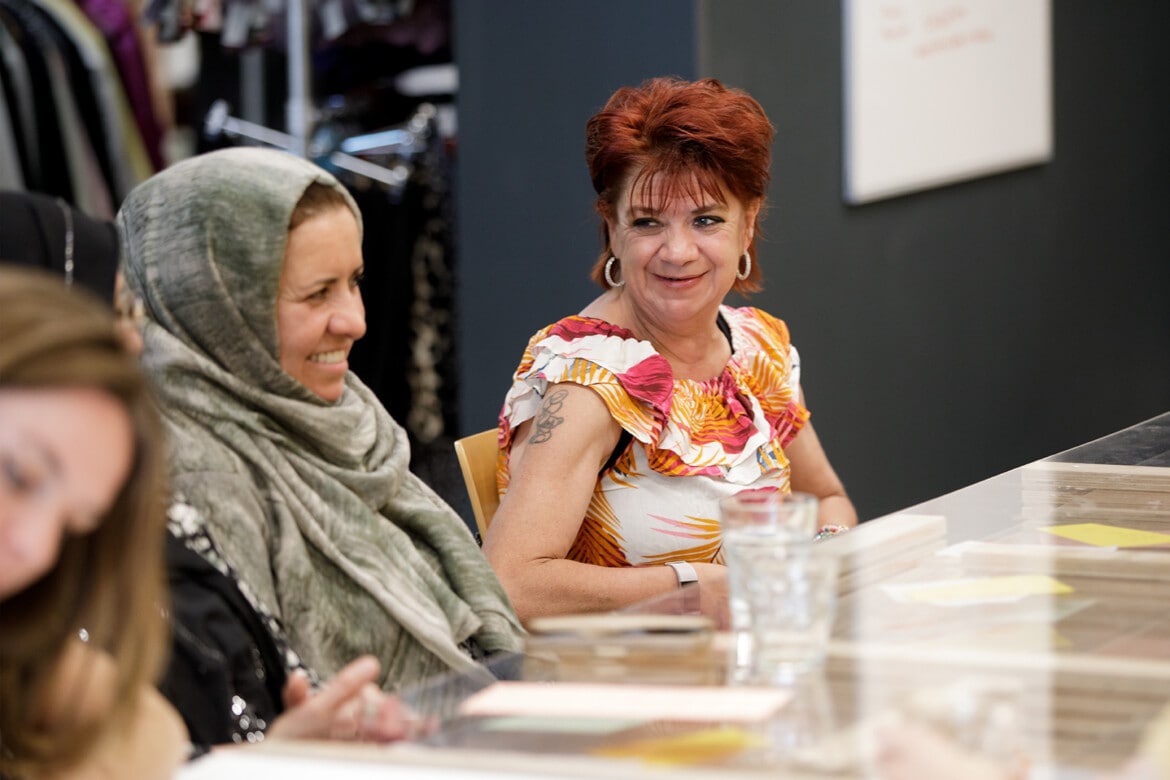
Collaboration with people with first-hand experience of poverty. Photograph by Aad Hoogendoorn
In collaboration with the people of Schiedam
We are not developing, designing and producing this unique exhibition on our own; we are working with local people who are themselves struggling to make ends meet, as well as with local organisations dedicated to helping them. They helped us choose the themes for the exhibition, and a group of residents is now helping us to select artworks, historical stories and objects from the museum’s collection.
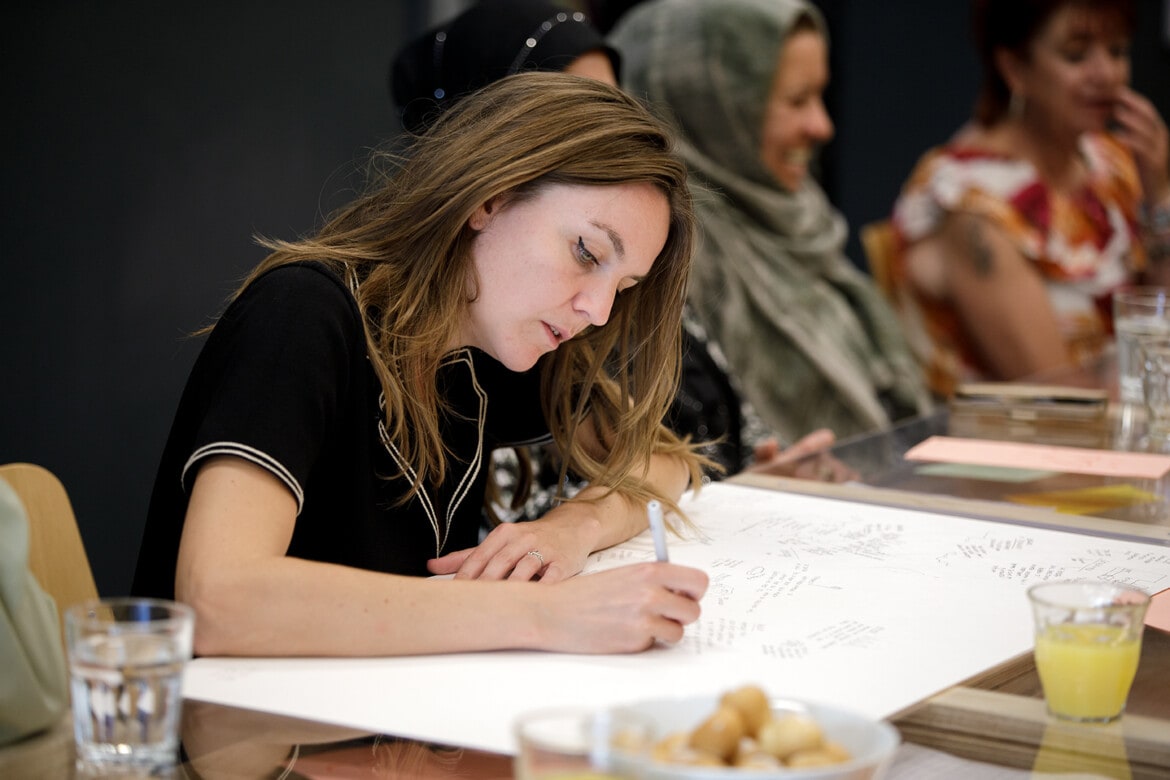
Architect Nadia Nena Pepels working on her soft map of the city. Photograph: Aad Hoogendoorn
A new social perspective on the city
The stories of the people of Schiedam are represented in the exhibition in a variety of ways. With her ‘soft map’, Schiedam architect Nadia Nena Pepels offers a new perspective on the city. She listened to conversations with local people who have first-hand experience of poverty and joined them on a walk through the neighbourhood. Where do you like to go – and where do you prefer to avoid going – when you live on a budget? How do you get around the city when you have no money for transportation? Pepels captured this experience on a drawn map of the city, complete with quotations and hotspots. The map offers visitors to the exhibition a whole new way of looking at the city of Schiedam.
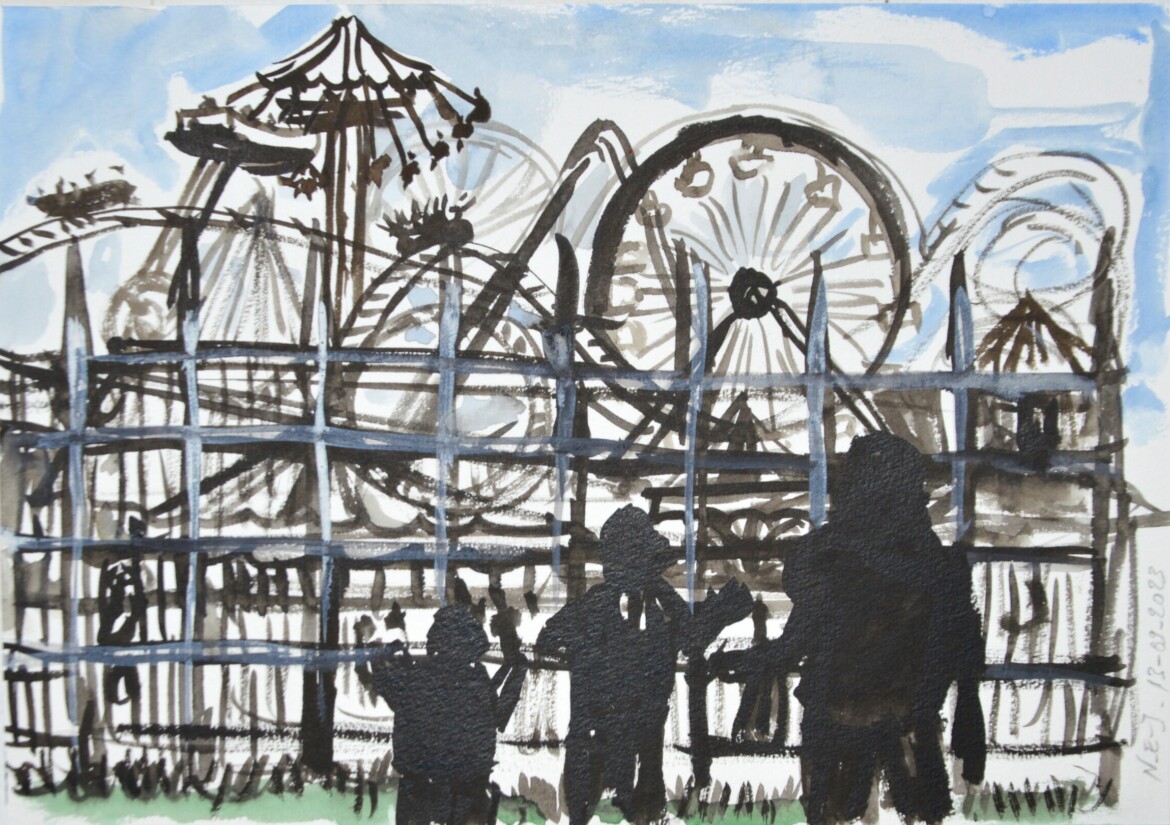
Nour Eddine Jarram, 2023, watercolour, artist’s collection
New artworks
The experience of poverty is also explored from an artistic perspective with relevant works from the museum’s collection. In addition, four artists have been asked to create new works especially for the exhibition. Nour-Eddine Jarram, whose work already features in the museum’s collection, is creating a series of over twenty watercolours about poverty then and now. Koos Buster and Domenique Himmelsbach are drawing inspiration for new artworks from conversations with local residents. Each of the artists is reflecting on the theme from their own perspective and that of the people of Schiedam. And because children unfortunately also live in poverty, they are also involved in the exhibition; in collaboration with De Kleine Ambassade and artist Chantal van Heeswijk, several children from Schiedam will be discussing poverty and how it affects their lives, and together they will create a work of art.
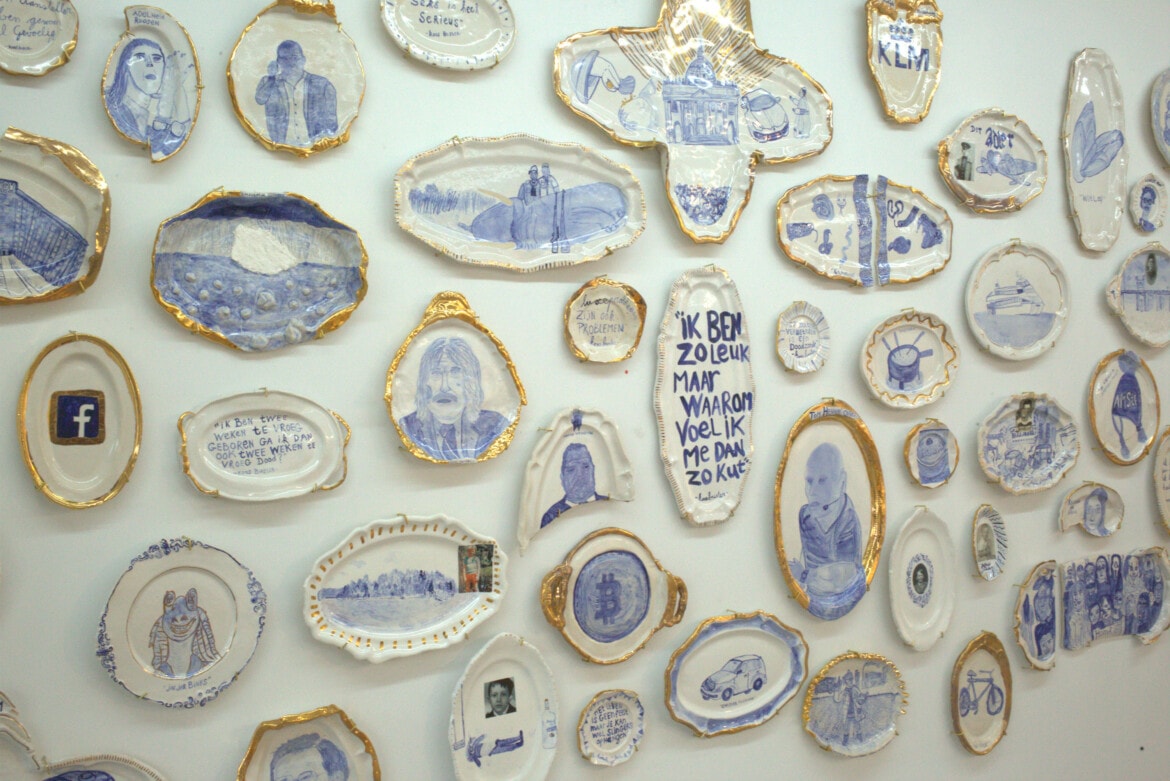
Koos Buster, Decorative plates of almost everything I don’t like, 2018
Visualising the history of poverty
The exhibition draws on the historical collection of the Stedelijk Museum Schiedam to tell a broader story of poverty in Schiedam. Among the exhibits is the pencil portrait of Machiel Sonius, drawn by a fellow resident of the city. It is an affectionate portrait. But unfortunately, some residents regarded Machiel as a problem to be solved rather than a person with problems who needed help. In 1894, the Schiedam Society Against Begging thought they had found the solution; using money raised, Machiel was sent to the House of Mercy in the north-east of Groningen. Here, far away from home, he lived among strangers: a motley mix of people with disabilities, alcoholics and so-called ‘socially undesirables’.
The exhibition also features several alms boxes, including a collection box bearing the coat of arms of the municipality of Schiedam and the inscription ‘Gedenkt den armen’ (Remember the poor). In the eighteenth century, Schiedam flourished thanks to the production and export of jenever. But not everyone in the city benefited from this growing prosperity. This collection box calls on the well-to-do to share their wealth with their fellow townspeople who do not earn enough to make ends meet.
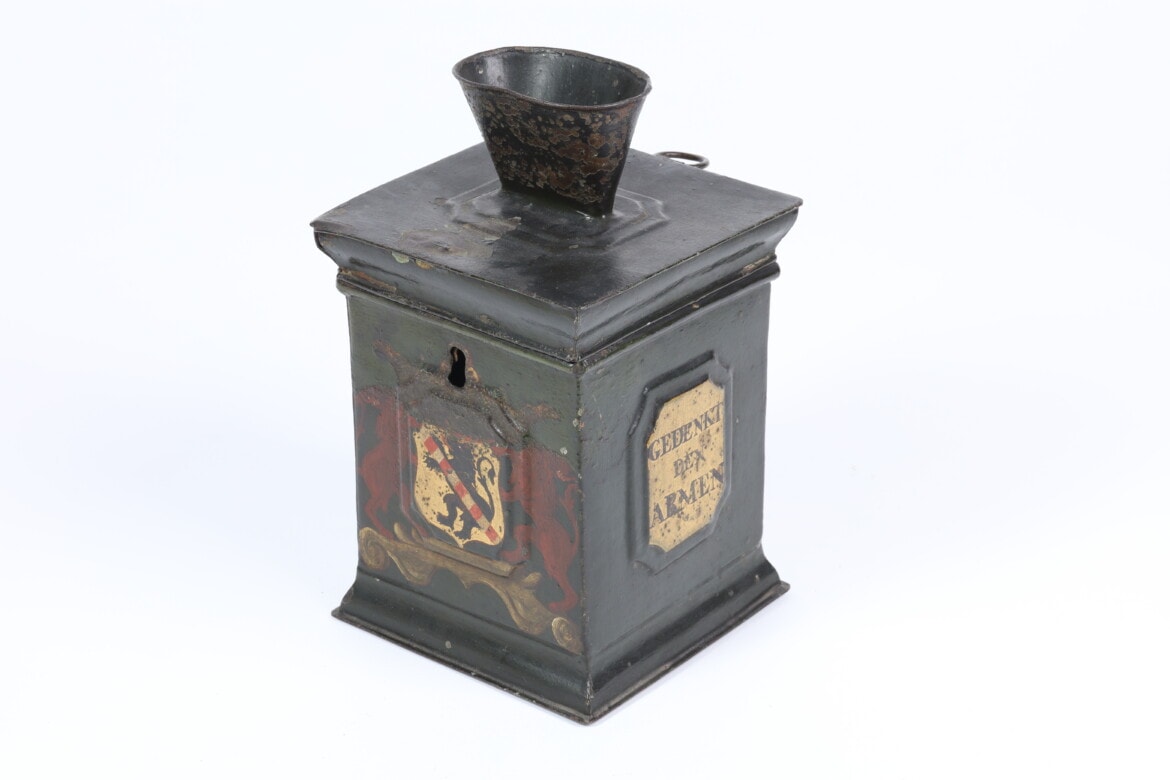
Alms box, probably from the eighteenth century. Stedelijk Museum Schiedam
These and other historical objects tell us not only about the history of poverty, but also about the present – the feeling of losing control over one’s life, being encouraged to be more self-reliant, and the difference a good education system can make.
Activities and encounters in the Stadsgalerij
The exhibition continues in the Stadsgalerij on the ground floor of the museum. This space is specifically for people who, after visiting the exhibition, are left wondering: so what now? How can I make a difference? Or how can I get help? It is a space for activities and for people to meet – a place that brings together people in need, organisations, people who want to take action and policy-makers.
Call for participation
Are you a resident of Schiedam who is struggling to make ends meet, or do you work for an organisation that supports people in financial need and would you like to be involved in the development of the exhibition? Or would you like to contribute to the programme of activities? Send an email to dorien@stedelijkmuseumschiedam.nl.
The following partners are involved in the project: Stem zonder Gezicht, Stichting Net Niet Genoeg, Wijkhuis Oost, de Leger des Heils woonkamer, de Voedselbank Schiedam, Stichting Niemand Buiten Spel and het Zimmertje.
My Schiedam
This exhibition is part of the Stedelijk Museum Schiedam’s social programme My Schiedam, in which the museum collaborates with local residents and organisations. Collaborations are initiated by both the museum and the people of the city. This results in meaningful programmes that we can only bring to life together. The Stadsgalerij is a dedicated space at our museum for exhibitions created in collaboration with the people of Schiedam.
The exhibition Out of poverty. Art, history and stories is sponsored by VSBfonds, the VriendenLoterij fund, Fonds 21, the Mondriaan Fund, the Fund Schiedam Vlaardingen e.o. and the De Groot Fund.
